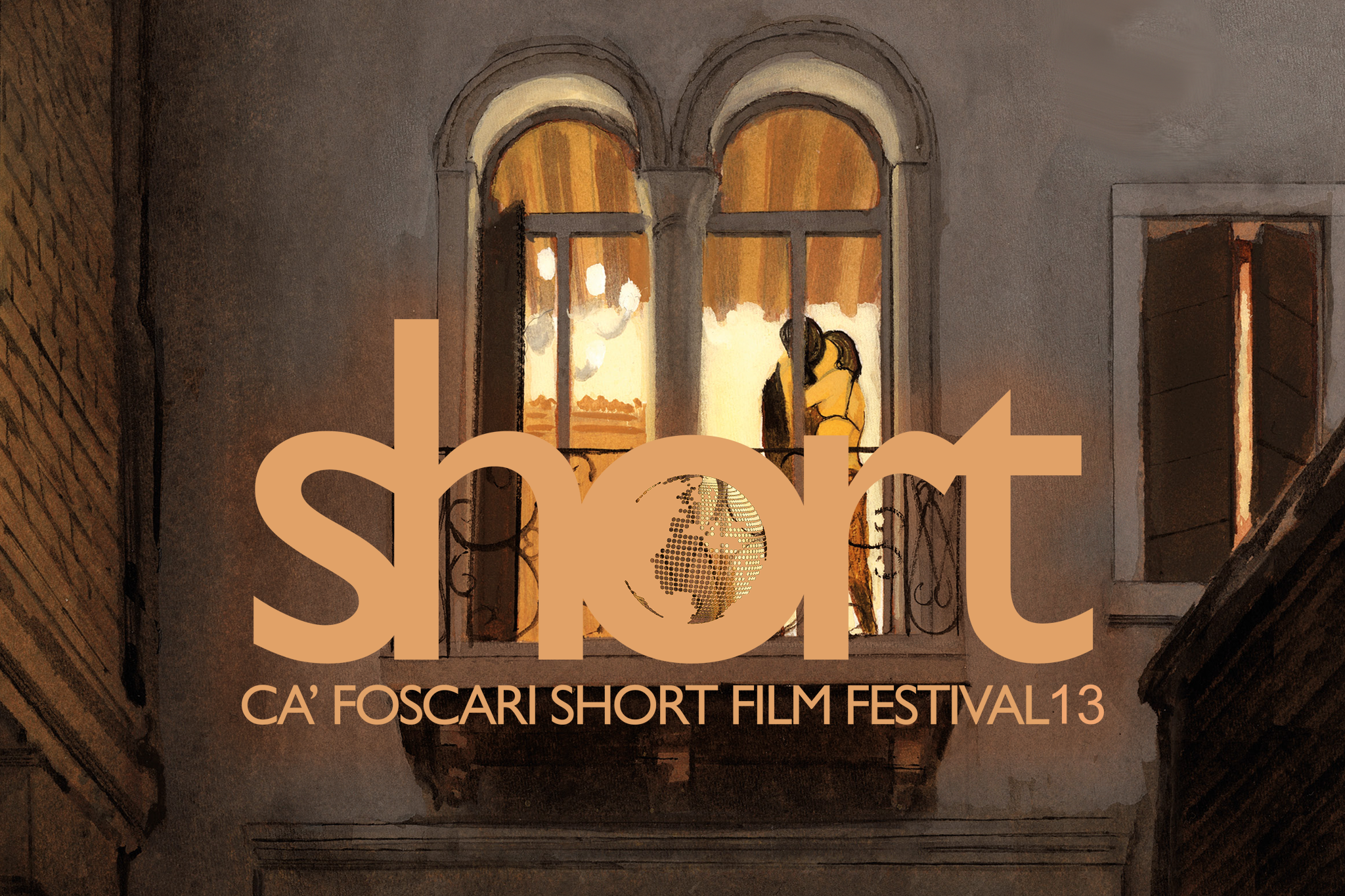
INVISIBLE BORDER by Mark Siegfried Gerstorfer (Austria) is the winner of the International Competition of the 2023 Ca’ Foscari Short Film Festival
The Italian animation FLY HIGH by CSC from Piedmont wins the “WeShort” Special Mention for the work that offers the best movie languages’ experimentation, while the “National Museum of Cinema” Special mention goes to RETURNING SOUTH by Sofia Ayala
BLOODY GRAVEL wins the best screenplay, the Korean REMEMBER OUR SISTER for the photography and WINTER BLOOM for the soundtrack. The award for multiculturalism goes to the Turkish FOOTPRINTS OF ANTS
PARALLEL COMPETITION:
The Australian Jack James Parry wins the CINIT Music Video Competition with Object of Life
The Anxieties by Anežka Kozlová and Matyáš Lada (Czech Republic) is the winner of the 10th High School Competition
SHORT MEETS AMOS GITAI AND MANUELE FIOR:
The Israeli director: “I am worried about the authoritarian drift of my country, it is impossible to deny the cosmopolitan nature of the world in which we live”
The author of this year’s poster: “Venice is such a unique city, the Short helps reveal its true soul”
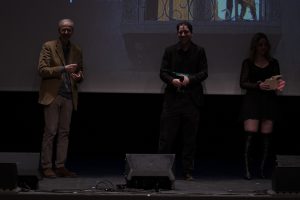 The short film Die Unsichtbare Grenze – Invisible Border (Austria, 26’40’’) by Mark Siegfried Gerstorfer, produced by Filmakademie Wien is the winner of the 13th Ca’ Foscari Short Film Festival’s International Competition. This is the first festival in Europe fully organized and managed from a university that, also this year, was widespread all over Venice. The screening of the films took place both in the iconic Auditorium Santa Margherita as well as in other partner sites, as museums and cultural institutions. The Festival was made in collaboration with Fondazione di Venezia, NH Venezia Rio Novo, Turin Cinema National Museum, the ‘short’ movie italian platform on demand WeShort, the oldest prosecco producer Carpenè-Malvolti, Cinit – Cineforum Italiano, the Municipalities of Venezia – Murano – Burano, the Vicenza Conservatory of Music “Arrigo Pedrollo” and the Giornate della Luce di Spilimbergo, which is festival dedicated to the masters of photography of Italian cinema.
The short film Die Unsichtbare Grenze – Invisible Border (Austria, 26’40’’) by Mark Siegfried Gerstorfer, produced by Filmakademie Wien is the winner of the 13th Ca’ Foscari Short Film Festival’s International Competition. This is the first festival in Europe fully organized and managed from a university that, also this year, was widespread all over Venice. The screening of the films took place both in the iconic Auditorium Santa Margherita as well as in other partner sites, as museums and cultural institutions. The Festival was made in collaboration with Fondazione di Venezia, NH Venezia Rio Novo, Turin Cinema National Museum, the ‘short’ movie italian platform on demand WeShort, the oldest prosecco producer Carpenè-Malvolti, Cinit – Cineforum Italiano, the Municipalities of Venezia – Murano – Burano, the Vicenza Conservatory of Music “Arrigo Pedrollo” and the Giornate della Luce di Spilimbergo, which is festival dedicated to the masters of photography of Italian cinema.
Along with the award ceremonies, the Festival’s closing ceremony was graced by the musical performance of Giovanni Dell’Olivo, playing a flamenco guitar, in a trio with Alvise Seggi on cello and Serena Catullo on vocals. The three performed a few songs in Venetian while images of films set in the lagoon scrolled on the screen.
The International Jury, consisting of Mika Johnson, multimedia artist, Robb Pratt, American animator and director, and actor Roberto Citran, awarded the main prizes of the International Competition. All the awards were made of prestigious Murano glass by the master glassmakers of the PROMOVETRO – Vetro Artistico di Murano Consortium. In addition, the First Prize-winning director received a glass artwork made by the artists Cosima Montavoci and Lorenzo Passi.
The first award for the best short film of the Competition, presented by juror Roberto Citran, went to Die Unsichtbare Grenze – Invisible Border by Mark Siegfried Gerstorfer, with the following motivation:
With a skillful direction, a near-perfect screenplay, and impeccable acting (the performance of the protagonist Temiloluwa Obiyem as the policewoman was extraordinary), the film tells us how a State, through the cold rules of bureaucracy, can show its inhumanity. The fact that the officer who carries out the deportation of an immigrant family has a background as a migrant, making the story even more dramatic.
An Albanian family is suddenly woken up during the night by the Austrian police, evicted from the apartment where it had taken root and brought to Kosovo, due to an irregularity in the family members’ papers. The two contrasting sides are separated by an invisible border, a limit that is continuously crossed by Nancy, a policewoman torn between the duties imposed by her work and the tenderness sparked in her by the family’s little girl. Mark Gerstorfer tells a dramatic domestic story, one that in the course of only a few hours leaves an indelible scar on the fate of a wrecked family, a painful reality that many immigrant families are destined to in their adoptive land.
The jury awarded the “WeShort” Special Mention to the movie offering the best experimentation in cinematographic languages to the only Italian film in Competition, the animation short film Fly High (Italy, 6’39’’), by Giuseppina Fais, Lorenzo Pappa Monteforte, Kevin Rosso and Yagiz Tunceli from the Centro Sperimentale di Cinematografia del Piemonte. The award, handed over by Robb Pratt, consists in a prestigious Murano glass plate. The short film won with the following motivation:
There is a saying in the film world: In live-action, you film first, then edit. In animation, you edit first, then film. For its tight pacing and clear narrative that clearly expresses themes of herd mentality, mass hysteria and the dangers of jumping to the wrong conclusion.
This short film is further evidence of the great narrative potential offered by animation. Fly High is a colorful social satire: a flying man appears in the sky, no one knows where he is coming from or how such a thing could be possible, but it is enough to wreak havoc in the whole world. Using extremely expressive language, the short is able to build a deep reflection on globalized society. In fact, through irony, it sheds a light on a modern-day dynamic, highlighting how the influence of media on an apparently trivial event – such as an odd flying man – can disrupt the precarious balance of modern times.
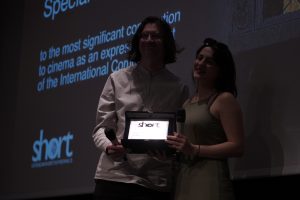 The Special Mention “Museo Nazionale del Cinema”, for the work offering the best contribution to cinema as an artistic expression, went to Volver al Sur – Returning South by Sofia Ayala (Germany/Mexico, 14’53”), which was produced for the German Film and TV Academy Berlin. The prize consists of a prestigious photo book on cinema and a plaque, and was presented by jury member Mika Johnson. The work was awarded with the following motivation:
The Special Mention “Museo Nazionale del Cinema”, for the work offering the best contribution to cinema as an artistic expression, went to Volver al Sur – Returning South by Sofia Ayala (Germany/Mexico, 14’53”), which was produced for the German Film and TV Academy Berlin. The prize consists of a prestigious photo book on cinema and a plaque, and was presented by jury member Mika Johnson. The work was awarded with the following motivation:
Because many of the films submitted had very strong artistic direction, awarding the best art film was not easy. We chose this film for its mastery of mis-en-scene, which included strong costume design, hair and make-up, cinematography, acting styles, locations and more. At the same time the use of music and sound design was equally artistic, working toward the unity of all other elements.
Volver al Sur is the short film by Sofia Ayala, which narrates the journey of a brother and a sister who drag their father’s corpse in order to cross the Mexican border and bury it in the place they once called home. Amid a desolate landscape and prolonged intense silences, broken by chants and shouts, a drama unfolds which intwines themes about the conditions of migrants, family bonds and grief. By being poignant and lyrical, it succeeds in combining the universality of the metaphorical narrative with such a powerful expressivity, derived from the director’s personal experience.
Instead, the new prize for the best screenplay in the Competition was assigned to a specific jury, consisting of Domenico Scimone, Eduardo Fernando Varela, Roberto Tiraboschi and Alessandro Loprieno. They decided to award the Special Mention “Histories of Vitae” Carpenè-Malvolti to the short film Bloody Gravel (Iran, 18’14’’) by the Iranian director Hojat Hosseini, a student at Tarbiat Modares University in Tehran. The reason behind the award, handed over by the CEO of Carpenè Malvolti Domenico Scimone, is the following:
For the tension of the well-balanced and solid narrative, the characters’ building and the crafting of dialogue, and the description of a border that is also a metaphor for a psychological barrier.
A strenuous journey towards the unknown, characterized by the inability to choose. The story of a flight from regressive cultural traditions. The only dramatic possibility to survive is offered by human traffickers, those who live commodifying the despair of a fleeting population. A man and a woman are the main characters of a work in which tension and unpredictability imbue every frame. Twenty days pass by, a time during which the only thing left to believe in is the faith in God. But the desert spares no one: “the desert has no God”. Roya is mute and pregnant, and this is hard on her. An upside-down world, in which birth becomes a problem to deal with, a source of stigma. Bloody Gravel is a crescendo of emotions that escalate into chaos in the inside of a half-wrecked car. A cage, an important symbol of the lack of freedom that characterizes the socio-political context of Afghanistan. Life is opposed to fear of dying. The only thing that is left is a burial in the sand, and the cry of an innocent.
The Special Mention “Le Giornate della Luce” for the best photography was assigned by a jury consisting of Donato Guerra, the artistic director of the festival, Silvia Moras, organiser and programmer of the festival, and Luca Pacilio, filmic journalist. The Mention went to Eonnileul Gieoghae – Remember Our Sister (South Korea, 28’55’’) by the young Corean filmmaker Hayoung Jo from the Dong-Ah Institute of Media and Arts. The award was conferred by Donato Guerra with the following motivation:
For the way it integrates visual language (lighting, tone, atmosphere, camera movements) into the film’s narrative, for the fluidity and consistency of the stylistic register with which it supports musical and dramatic moments.
Remember Our Sister denounces in an original way, thanks to the musical genre, the condition of the “comfort women” by narrating one of the many episodes of violence which took place in the American military stations in Korea in the 1980s. The spectator is drawn into the tight network of solidarity which bonds the Korean women and witnesses the shattering of illusions of the 13-year-old Hong, who was forced to face reality and, thus, abandon the optimism and innocence of childhood. The complexity of the topic, of recent and yet painful history, was dealt by the filmmaker Hayoung Jo with a sharp and delicate gaze, with a great ability in the photography and in the lighting layout.
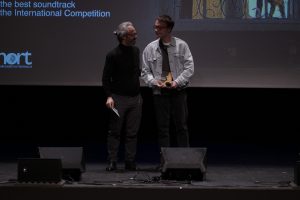 The “Conservatory of Vicenza” special mention to the best soundtrack, determined by a special jury composed of Davide Tiso, Lorenzo Pagliei, Pierangelo Valtinoni, Pietro Tonolo and Elisabetta Andreani, went to the Polish short film Rozkwit Zimowy – Winter Bloom (Poland, 29′ 59”) directed by Ivan Krupenikov and produced by the Warsaw Film School. The prize, presented by the composer and multimedia designer Davide Tiso, was awarded with the following motivation:
The “Conservatory of Vicenza” special mention to the best soundtrack, determined by a special jury composed of Davide Tiso, Lorenzo Pagliei, Pierangelo Valtinoni, Pietro Tonolo and Elisabetta Andreani, went to the Polish short film Rozkwit Zimowy – Winter Bloom (Poland, 29′ 59”) directed by Ivan Krupenikov and produced by the Warsaw Film School. The prize, presented by the composer and multimedia designer Davide Tiso, was awarded with the following motivation:
The soundtrack is a fundamental element of filmic work – it enriches the audience’s enjoyment by transforming the story into a complete sensory experience; it enhances the work by amplifying its semantic and emotional value. The brilliant sound direction of this film was able to organically combine all the main elements of an effective soundtrack, harmonizing the original sound design with the musical themes, foley and speech. Special praise also goes to the mixing of sound elements.
Winter Bloom places the viewer at the front of a desolate scenario of an ecological catastrophe, of a world destroyed by a humanity that didn’t know how to care for it, and that now pays with sickness and death, the consequences of their dream of omnipotence. The restlessness of the days to come is rendered very effectively through gloomy sonorities that accompany the entire duration of the film and that appear as the very powerful echo of an unbearable silence that pervades every crevice and insinuates itself into consciences. In this very profound and authentic short, the man finds that, in the end, he must come to terms with himself and to face in solitude the suffering of a nature whose life, without mercy, was drained.
It was the Turkish Ümit Gü instead who won the “Pateh Sabally” Award for multiculturalism with his Footprints of Ants (Turkey, 15′). The prize, offered by the Municipality of Venice, Murano and Burano, and dedicated to the boy from Gambia who disappeared in the waters of the Grand Canal in January 2017, is even more significant not only for the important themes covered by the short film, but also for the director’s decision to not participate in the festival to help his fellow countrymen in the areas afflicted by the earthquakes, to which the festival has expressed its solidarity. The award was presented by the President of the Municipality of Venice, Murano and Burano Marco Borghi with the following motivation:
The film presents an intense story about pain and death, and mostly war. However, it does not fail to deliver a strong message of hope: thanks to the children, the barriers built by different ethnic groups are overcome. And it seems that the director suggests following in their footsteps. Only children’s harmless thoughts can overcome divisions.
Through the use of ants as a powerful metaphor – Ümit Güç tells a universal story of coexistence and migrations. The events unfold against the backdrop of a tent city on the border between Turkey and Syria, where Kurdish-Syrian and local refugees difficultly find themselves sharing the same living and working spaces in the cotton fields. It is only thanks to two children who will decide to hide together – the Syrian Evin and the Turkish Barış – that the two groups, in order to find them, will have to be able to overcome their differences. A story of not only the physical journey that migrants have to face, but also the metaphorical one of human beings who, by uniting, can change their destiny.
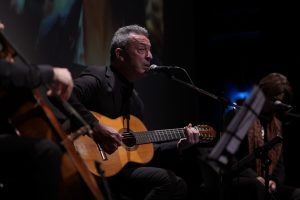 Regarding the Collateral Competitions, it was then announced the winner of the 7th edition of the CINIT Music Video Competition, a contest dedicated entirely to music video made by students from film schools or universities from all over the world. The winner was Object of Life by the Australian student Jack James Parry from the Deakin University, with a playful storyline about the dangers of working to achieve material goals in life. Moreover, the jury, consisting in Giovanni Bedeschi, producer and director, Alice D’Este, journalist, and Giordano Giordani, CINIT board member, nominally awarded a Special Mention to the videoclip Zeus by Nicco Nn. The prize for the best video clip was awarded with the following motivation:
Regarding the Collateral Competitions, it was then announced the winner of the 7th edition of the CINIT Music Video Competition, a contest dedicated entirely to music video made by students from film schools or universities from all over the world. The winner was Object of Life by the Australian student Jack James Parry from the Deakin University, with a playful storyline about the dangers of working to achieve material goals in life. Moreover, the jury, consisting in Giovanni Bedeschi, producer and director, Alice D’Este, journalist, and Giordano Giordani, CINIT board member, nominally awarded a Special Mention to the videoclip Zeus by Nicco Nn. The prize for the best video clip was awarded with the following motivation:
A painful and vivid reflection on the value of life and everyday life during the war. No one can remain indifferent to the blank stares of those who attempt to flee and find themselves immersed in the ugliness of humanity in the abyss of conflict (in this case the Ukrainian one). The estranging music, brutally contrasting with the beautiful cinematography, and the context increase the feeling of bewilderment and fear.
A prize was then awarded to the winner of the 10th edition of the High School Competition. The prize was dedicated to the best short film made by high school students from all over the world. A jury consisted of students from the Ca’ Foscari University declared Úzkosti – The Anxieties by Anežka Kozlová e Matyáš Lada, two young high school students from the Czech Republic, as the winner. The documentary features ten genuine accounts of people who have experienced and overcome anxiety. The prize was awarded with the following motivation:
For the ability of dealing with the specific topic with evident depth and awareness and translate it just as effectively in terms of form and aesthetics.
At the end of the award ceremony, the artistic director and organizer of the Festival Roberta Novielli thanked the almost 200 volunteers from the Ca’ Foscari University who made this festival possible, thanks to their enthusiasm, passion, and dedication. And she is looking forward to seeing everyone in 2024, on the fourteenth edition of the Ca’ Foscari Short Film Festival.
Short meets Amos Gitai & Manuele Fior
Among the most remarkable hosts of this 13th Ca’ Foscari Short Film Festival we cannot fail to mention Amos Gitai, one of the most important Israelian directors in the last decades. In his movies he deals with many topics, such as war, politics, and the difficult situation in the Middle East, which is critically examined, particularly when his home country ends up in the spotlight. It happened in some of his most well-known works, Esther (1986), Kippur (2000) and Ana Arabia (2013). Gitai connected remotely since right now he is making a theatrical pièce based on his short House (1980), which will play on the audience participation. Nonetheless the meeting was very short, when answering to some audience’s questions, the Israelian director did not deny his own concern towards the Israeli’s authoritarian drift, however he also had the chance to express his own artistic poetics. He defined his eclecticism as the result of the natural course of life, of his never-ending desire to experiment, of exposing the several chances for artistic interpolation (as in the beginning of Kippur, in which cinema merged with painting), and of the attention towards an increasingly cosmopolitan world – as he said. In just a few minutes he transmitted to the audience how important is that cinema talks about reality and social issues. Before saying goodbye, the director manifested his hope (and maybe also the promise) to come back to the Short next year, in person this time, and his love for Italy, which, thanks to the resemblance to his land, he has repeatedly referred to as “a second home”.
The last special program, before the closing ceremony, was a chat with the cartoonist and illustrator Manuele Fior, the author of this edition’s poster. The interview was conducted on the main stage by Davide Giurlando. Graduated in architecture in Venice, Fior has always pursued his passion for drawing together with his studies. During the interview, the author walked the audience through his creative process, a cauldron of ideas and cues in which he skillfully mixes original ideas and elements “stolen” from those who inspire him, to achieve an extremely personal and unmistakable style. He has been living in Venice after years of traveling, on a “pilgrimage” that inspired him for numerous works, including Cinquemila chilometri al secondo (2010), the drafting of which made him ask questions about himself and about the direction in which he was directing his own life. More recently, Hypericon (2022), his latest effort, the protagonist is Berlin at the end of the 90s. Color is one fundamental feature of his works, which often assumes a central role. Just think of La signorina Else (2017), where the story starts with a wide palette of colors but, the more the tragedy develops, the more it shrinks, ending in black. Fior loves to learn from the past and considers it essential for the creation of this graphic novel, a re-adaptation of the 1924 book by Arthur Schnitzler, for which he studied the aesthetic canons of another era to faithfully reproduce the physiognomy of the protagonists. The illustrator states: “When an author has to get into the skin of a character who existed a hundred years before, he does so by also looking at the work of other illustrators of the past”, naming Klimt and Grunt among his inspirations. One of his most famous works is certainly Celestia (2019), which he decided to set in Venice by designing it as the “City that could have been” in a post-apocalyptic scenario, enriching it with imaginary architectural elements. He describes it as a sort of living miracle, a unique city, so profoundly different from how tourists imagine it. Precisely for this reason, he said that cultural events such as the Ca’ Foscari Short Film Festival are a great way to immerse as many people as possible in the “true” soul of the city.

